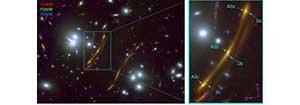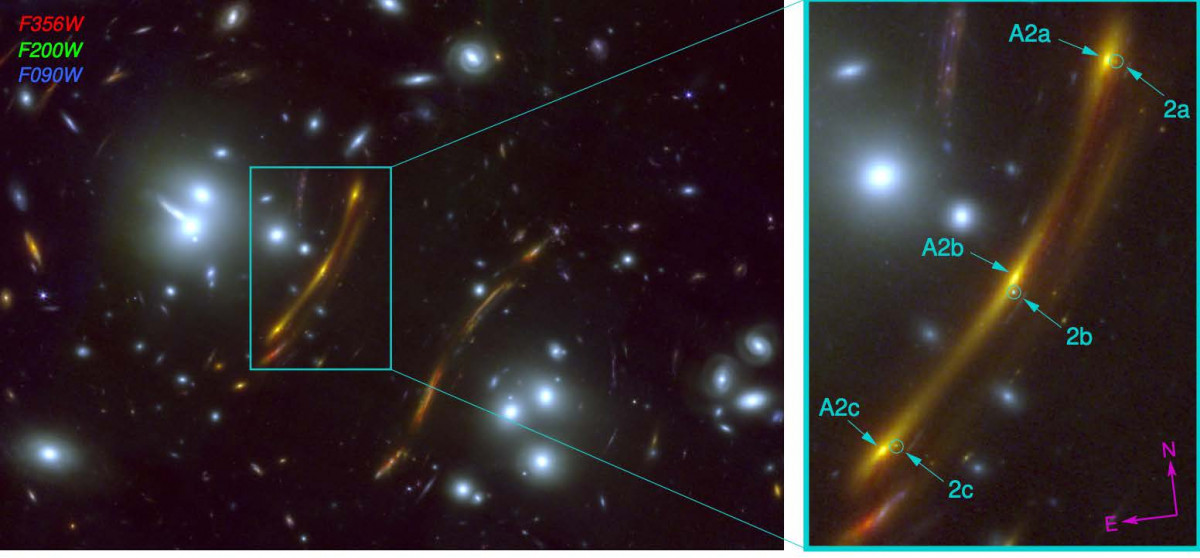A Bright and Shiny Result from PEARLS

We report the discovery of a new transient in James Webb Space Telescope (JWST) NIRCam exposures of the massive galaxy cluster PLCK G165.7+67 (G165) taken as part of the Prime Extragalactic Areas for Reionization and Lensing Science (PEARLS) program (GTO-1176; PI: R. Windhorst). The source was not detected in previous Hubble Space Telescope images (Frye et al. 2019; Pascale et al. 2022).
Follow-up spectroscopy was accomplished using the Large Binocular Telescope (LBT) LUCI in a consortium-wide effort. The partners from Germany allocated the telescope time, the partners from Italy prepared, carried out, and reduced the spectroscopy, and the partners from UArizona directly supported the organization and observing activities. As a result of this grand effort, the redshift of the SN host was measured.
Additional imaging and spectroscopy have been carried out with JWST (DD-4446; PI: B. Frye). This one transient is detected in three different locations (a, b, and c) as a result of gravitational lensing by the foreground galaxy cluster G165. Our gravitational lensing model predicts that light from the transient arrived first in image “a,” followed by “c,” and then “b”. This transient, which we designate as "SN H0pe," is s Type Ia supernova that was classified as a result of analyzing the JWST observations.

Figure caption: JWST/NIRCam color image in the central region of G165. {\it Right:} Closeup of the boxed region depicting the three images of the galaxy Arc 2, as labeled. The SN Ia candidate is circled. Note the parity flip between images 2c and 2b, and images 2b and 2a, as predicted by lensing theory. The SN Ia candidate appears in all three images.

For Public
Public events include our Monday Night Lecture Series, world-reknowned Astronomy Camp and Mt Lemmon Sky Center.

For Students
A good place to start if you want to become an undergrad major or grad student, or need to find our schedule of classes.

For Scientists
Find telescopes and instruments, telescope time applications, staff and mountain contacts, and faculty and staff scientific interests.




